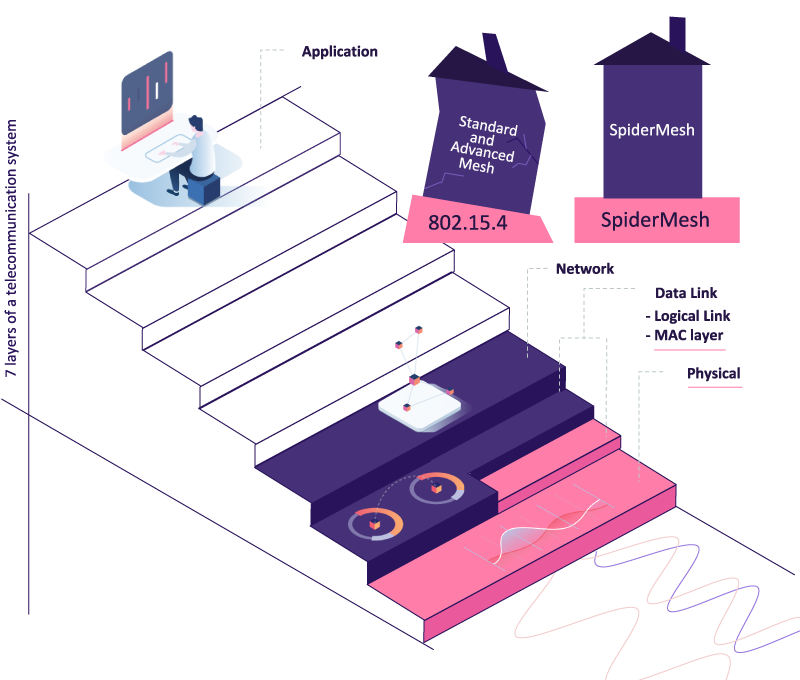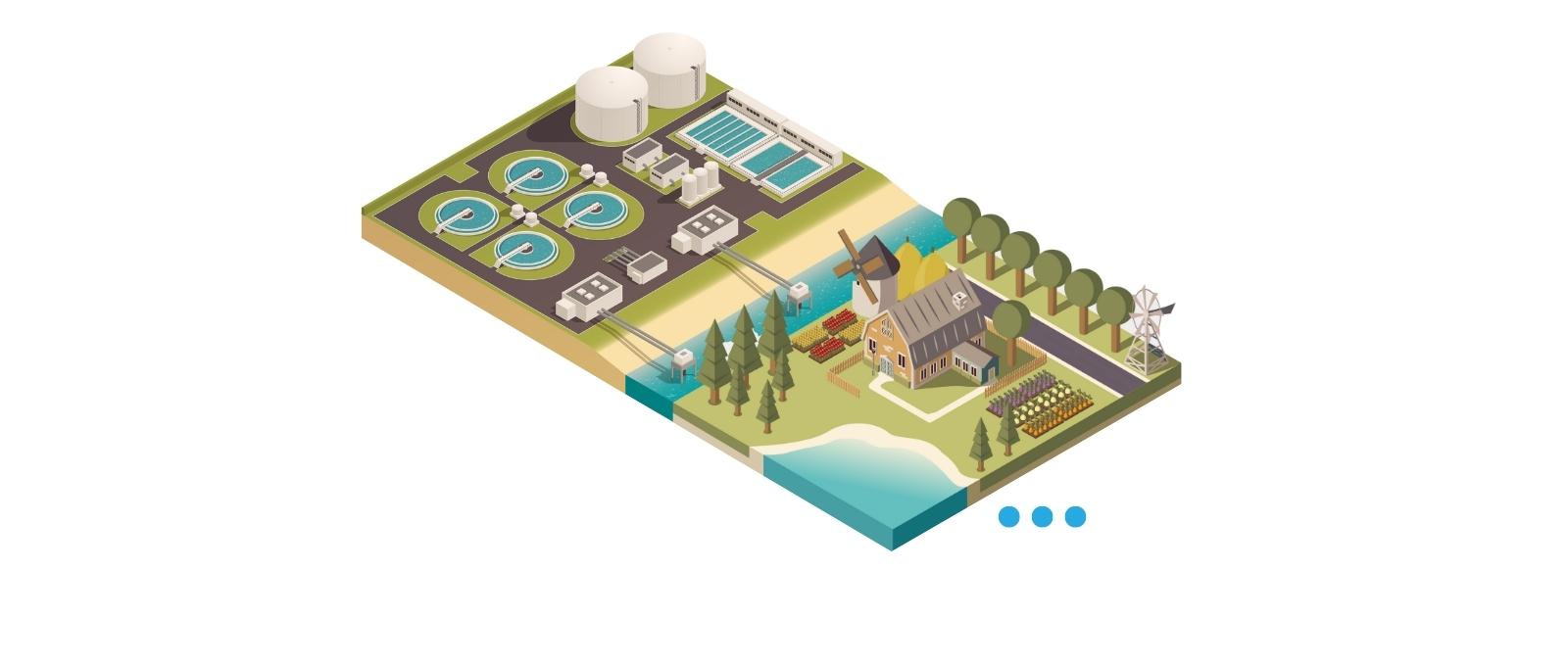What is SpiderMesh ?
SpiderMesh is a Low Power Wide Area Network (LPWAN) protocol, from concept to reality, it is a Machine-to-Machine (M2M) wireless technology built from the ground up.
The first truly cooperative mesh technology, featuring bit synchronized communication, we make it possible to counter the well known effect of packet collision as the network increases in size. A true differentiation between SpiderMesh and other mesh protocols.
While standard protocols re-transmit data in a nondeterministic fashion in the event of a packet collision, SpiderMesh makes it possible to avoid these collisions. Thus, unrivaled and unmatched performance in terms of power consumption, network size and reliability in maintaining M2M communication.
SpiderMesh is best in class among the “other guys” and leads the way as the first LPWAMN (low-power wide-area mesh network).

Let’s build a strong connectivity together !
Unlike other technologies, we have built a solid foundation to build upon.
Standard and advanced mesh technologies rely on the 802.15.4 (a wireless personal area network standard) foundation. Unfortunately, that structure wasn’t built to handle mesh communications. Therefore, technologies such as Zigbee and their more advanced counterparts lack the scalability and Quality of Service (QoS) necessary for IoT.
Our foundation opens up limitless application potential. We just didn’t cut a piece of the LPWAN pie, SpiderMesh is a whole other pie.
We enable tremendous connectivity potential, extending across vast distances, providing exceptional Simplicity, QoS, Flexibility, Scalability, Reliability, all while maintaining Low-cost and Autonomy.
Secure and reliable network connectivity has never been more important. Our solution is secure, flexible, scalable, and future-proof.
Here are some key points
Zero network degradation
Energy efficient network, no need for energy capture
Remarkable reliability and network resilience
Virtually unlimited network scalability
- Ease and simplicity of network configuration and maintenance

Keeping it Simple
SpiderMesh is designed for the most challenging deployments and connects devices seamlessly no matter the environment.
Tried, tested, and proven since 2012 we have enabled object and sensor connectivity reliably, regardless of location and environment conditions, such as remote forested areas, dense urban environments and underground tunnels.
Additionally, because SpiderMesh is frequency hopping, we are a resilient and tolerant network within noisy and/or industrial environments, but wait there’s more. You can also add virtually unlimited number of sensors and/or objects to the same network.
Key benefits
Quality of service
Reliability in challenging conditions and deterministic communication.
Autonomous
Low-power consumption suitable for battery-less and battery operated devices, with or without energy harvesting. Seamless integration & deployment and extremely low network maintenance.
Long range WAN
Medium range node-to-node communication, up to 10 km. Multiple hops, for a virtually unlimited network range.
Flexible
Self-healing and self-forming network with reliability and guaranteed QoS in any challenging environment even with high occlusion conditions (forest, mountain, buildings, underground tunnels, RF noise, etc.)
Scalable
Virtually unlimited nodes on the same network while keeping the same QoS. Due to its synchronous design, it offers superior scalability and reliability.
Low-cost
Bottom-up network technology with no infrastructure requirement. Completely private, with the lowest total ownership cost.
Limitless possibilities
When it comes to large-scale smart-city asset monitoring, AMI (advanced metering infrastructures) or environmental monitoring, SpiderMesh makes a mark by bridging the technological gap to fully connect thousands of battery-operated devices on an infrastructure-less network. By bringing flexibility and agility to WANs (wide-area networks), SpiderMesh unlocks new IoT opportunities.
- Connected water & gas meters (AMI)
- Forest fire detection
Watershed monitoring
- Environmental monitoring
Industrial process monitoring
